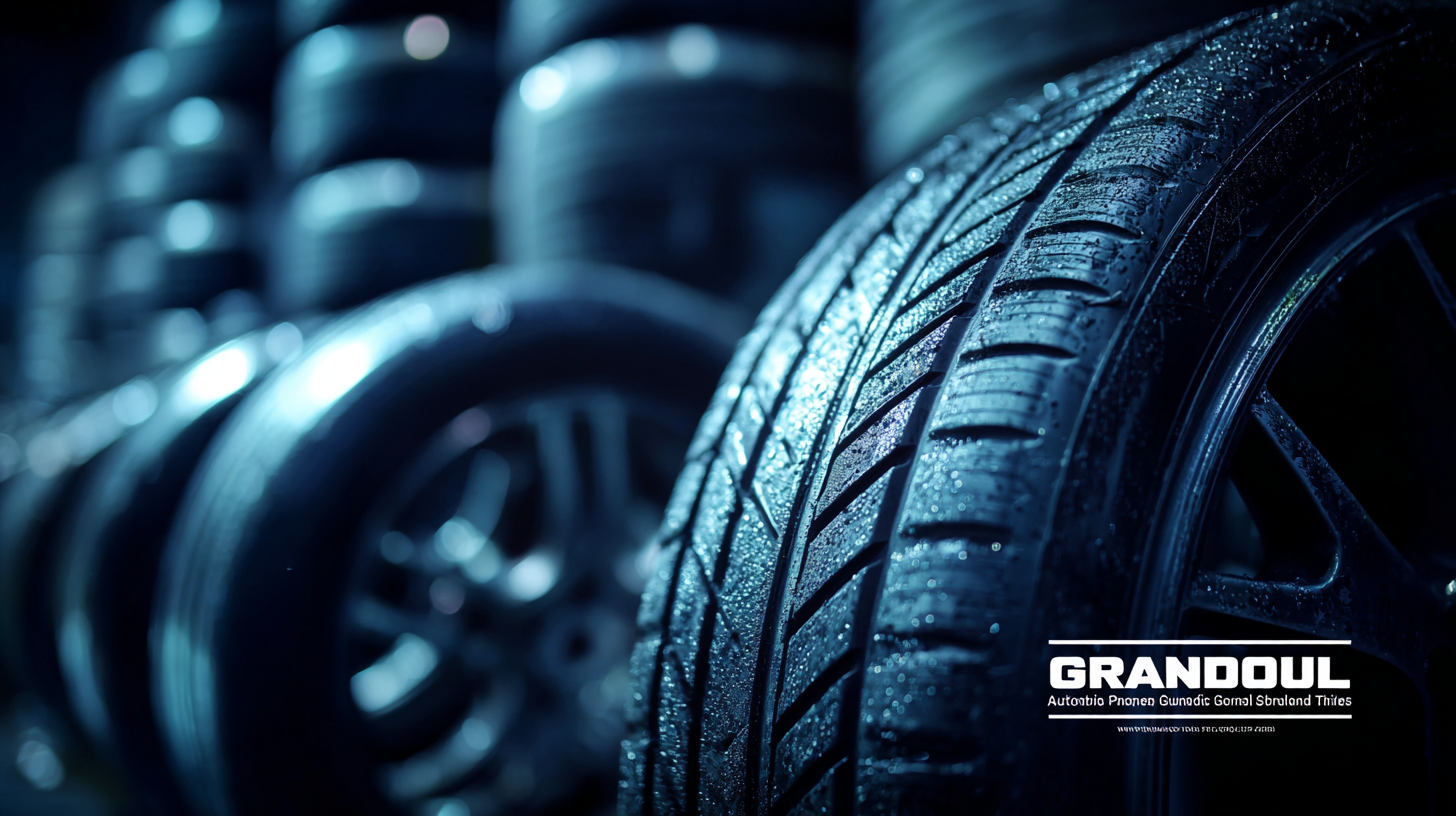The automotive industry is under constant pressure to meet stringent global production standards, especially when it comes to the quality and safety of automobile tires. According to a recent report by the International Organization of Motor Vehicle Manufacturers (OICA), tire-related issues account for approximately 30% of all vehicle accidents worldwide, emphasizing the critical importance of adhering to established manufacturing guidelines. In the face of evolving technologies and consumer expectations, manufacturers must navigate a complex landscape of regulations, materials, and testing procedures to deliver high-quality automobile tires. This blog aims to delve into the essential aspects of global production standards, providing valuable tips for manufacturers seeking to enhance tire performance and safety. With the global tire market projected to reach $287.3 billion by 2025, understanding these standards is not just beneficial—it's imperative for maintaining competitive advantage in this fast-paced industry.

Global production standards play a crucial role in tire manufacturing, ensuring that tires not only meet safety requirements but also perform optimally under various driving conditions. These standards, set by various international organizations, guide manufacturers in the development and engineering of tire products. Compliance with these standards guarantees that tires are subjected to rigorous testing for durability, traction, and resistance to wear, thus enhancing the overall quality and reliability of the final product.

Moreover, adherence to global production standards fosters international trade and consumer confidence. Manufacturers that meet these recognized benchmarks can access broader markets, as drivers and businesses alike seek products that comply with standards they trust. This unified approach to regulations also helps in minimizing environmental impacts, as sustainable practices become a part of the production process. By prioritizing these global standards, the tire industry not only protects consumers but also promotes innovation and sustainability in the long run.
Certification organizations play a crucial role in establishing and maintaining global production standards for automobile tires. These organizations ensure that manufacturers comply with specific safety, quality, and performance criteria, which are essential for consumer safety and environmental sustainability. Among the most recognized entities in this field is the International Organization for Standardization (ISO), which sets extensive guidelines that impact tire design, material choice, and manufacturing processes. Adherence to ISO standards helps manufacturers produce tires that meet international safety benchmarks and performance expectations.
Another important organization is the Tire and Rubber Association of Canada (TRAC), which focuses on educating the industry and establishing comprehensive guidelines for tire manufacturing. TRAC collaborates with other certifying bodies to ensure that tires produced meet rigorous testing procedures that include durability, traction, and resistance to wear.
Additionally, the European Tyre and Rubber Manufacturers' Association (ETRMA) plays a significant role in regulatory affairs in Europe, advocating for best practices and ensuring compliance with environmental regulations. Together, these organizations work to ensure that consumers receive high-quality, reliable tires that enhance safety on the road while promoting sustainability in tire production.
The quality of materials used in tire production directly affects overall tire performance, safety, and longevity. Tires are complex engineering products comprising various components, including rubber compounds, steel belts, and fabric. The choice of raw materials influences the tire's grip on different surfaces, resistance to wear, and ability to dissipate heat. For example, high-quality natural rubber provides excellent traction, while synthetic rubbers can improve durability and performance in extreme weather conditions.
Moreover, additives such as silica and carbon black play crucial roles in enhancing the tire's flexibility and strength. Silica, in particular, can reduce rolling resistance, contributing to better fuel efficiency for vehicles. However, the sourcing and quality of these materials can vary significantly among manufacturers, impacting not only the performance but also the environmental footprint of the tires. As consumers become more aware of these aspects, choosing tires based on material quality will be essential for ensuring safety and achieving optimal vehicle performance on the road.
This chart illustrates the comparison of material quality indices and their impact on tire performance across various essential parameters. The data showcases how different material quality levels affect key performance indicators such as tread wear, grip, and rolling resistance.
The journey of producing high-quality automobile tires begins with the careful selection of raw materials. According to the International Rubber Study Group (IRSG), approximately 70% of tire production costs are attributed to raw materials such as natural and synthetic rubber, carbon black, and silica. Each of these components plays a critical role in determining the performance and durability of the tire. For instance, the use of silica can reduce rolling resistance, leading to improved fuel efficiency, which is increasingly important as the automotive industry pivots towards more sustainable practices.

Once raw materials are sourced, the production process involves several meticulous steps including compounding, molding, and curing. The Tire Industry Association reports that the formulation of rubber compounds can take up to three weeks, involving extensive testing to ensure optimal performance characteristics. During the molding stage, the tire design is created using precision molds that reflect the required specifications for different vehicle types. Finally, the curing process utilizes heat and pressure to solidify the tire structure, ensuring it meets safety standards set by regulatory bodies like the International Organization for Standardization (ISO). As manufacturers embrace advanced technologies such as automation and data analytics, the efficiency of these production processes continues to improve, paving the way for future innovations in tire manufacturing.
In the automotive industry, understanding and adapting to regional production standards is essential for manufacturers to thrive amidst the complexities of global markets. Different regions impose varying regulations and benchmarks that can significantly impact the design and lifecycle of automobile tires. For instance, while North American standards may focus primarily on performance durability, European regulations often prioritize environmental sustainability, requiring producers to innovate in material usage and manufacturing processes.
As illustrated by recent findings from “The Future of Jobs Report 2023,” industries must harness adaptability not only in their products but also in their operational strategies. Reports indicate that companies which align their production methodologies with local standards could enhance market share by approximately 30%, showcasing the critical balance between compliance and competitiveness. Furthermore, geographical variations in challenges such as climate threats necessitate a tailored approach. Just like municipalities in Tunisia are empowered to address climate adaptation through localized strategies, tire manufacturers can also benefit from a granular understanding of regional needs, ensuring their products meet not only regulatory expectations but also the practical challenges faced by consumers.
Incorporating nature-based solutions into tire production could emerge as a substantial area for innovation. Adapting designs to mitigate issues like soil salinization can not only align products with regional agricultural needs but also promote greater sustainability in manufacturing. This intersection of local adaptation and global production standards will define the future success of the automobile tire industry.
| Region | Tire Standard | Common Tire Size | Regulatory Challenges | Adaptation Strategies |
|---|---|---|---|---|
| North America | DOT (Department of Transportation) | P225/60R16 | Variation in state regulations | Local partnerships and compliance audits |
| Europe | ECE (Economic Commission for Europe) | 225/50R17 | Diverse legislation across countries | Standardization initiatives and testing facilities |
| Asia | JIS (Japanese Industrial Standards) | 205/55R16 | Rapid market changes and consumer preferences | Consumer feedback loops and agile manufacturing |
| Australia | Australian Design Rules (ADR) | 215/65R16 | Environmental regulations and standards | Sustainability initiatives and eco-design |
| South America | INMETRO (Brazilian Institute of Metrology) | 195/65R15 | Economic instability and compliance costs | Cost management programs and regulatory workshops |
TradeManager
Skype
VKontakte

